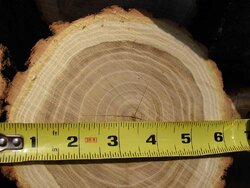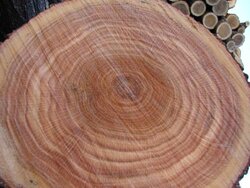A guy at work is cleaning off the banks of a pond neglected for many years. The overgrowth of nuisance trees has dropped leaves in the water for years, now effecting aquatic life per a fisheries biologist. I've been over there for three afternoons and came away with 6 full size pickup loads of firewood. Problem is, without leaves, I'm not sure what the majority of these southern Iowa trees are. I also took a couple small pin oaks (still have leaves) and a small ash. The pictures should provide a good idea what I'm looking at. The wood is yellowish similar to Mulberry but not as pronounced of a yellow. The bark is different too. These trees all grow pretty much straight up, possibly because they were packed in there so tightly. They are on the pond banks, not actually in the water. Most are 5 inches diameter up to 14. They split very easily. This fresh cut green wood does not have a distinct smell like I find with oak, cedar or pine. They split straight and very easily. Again, found just growing all around the banks of a pond. Appreciate thoughts from those who may be able to identify. Six months from now I'll be over there studying leaves! I'm sure there is another 10 loads waiting but think I'll continue thinning things out for him and make my way to a couple decent pin oaks that I'd like to have C/S/S in my backyard for a future season. Thanks
Attachments
-
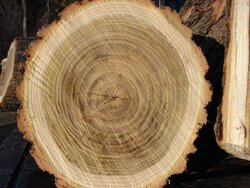 Endveiw 1.jpg78.5 KB · Views: 713
Endveiw 1.jpg78.5 KB · Views: 713 -
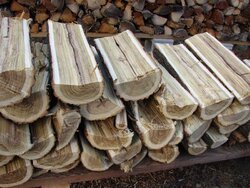 Fresh split.jpg94.3 KB · Views: 3,467
Fresh split.jpg94.3 KB · Views: 3,467 -
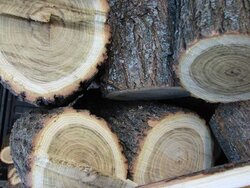 Pile endview.jpg89.9 KB · Views: 704
Pile endview.jpg89.9 KB · Views: 704 -
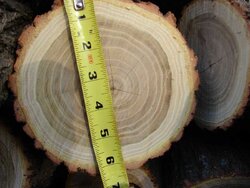 Diameter.jpg57.6 KB · Views: 728
Diameter.jpg57.6 KB · Views: 728 -
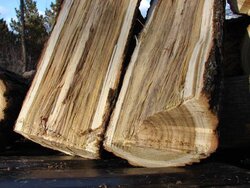 Split closeup.jpg84.3 KB · Views: 740
Split closeup.jpg84.3 KB · Views: 740 -
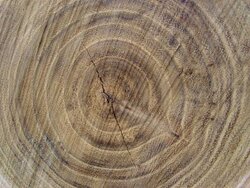 Endview closeup.jpg117.3 KB · Views: 730
Endview closeup.jpg117.3 KB · Views: 730 -
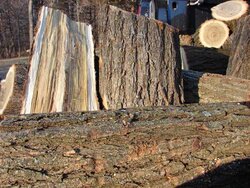 Bark-split.jpg133 KB · Views: 764
Bark-split.jpg133 KB · Views: 764 -
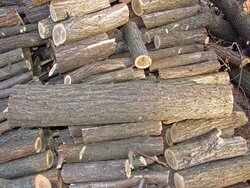 Pile, barkside.jpg133.9 KB · Views: 685
Pile, barkside.jpg133.9 KB · Views: 685


